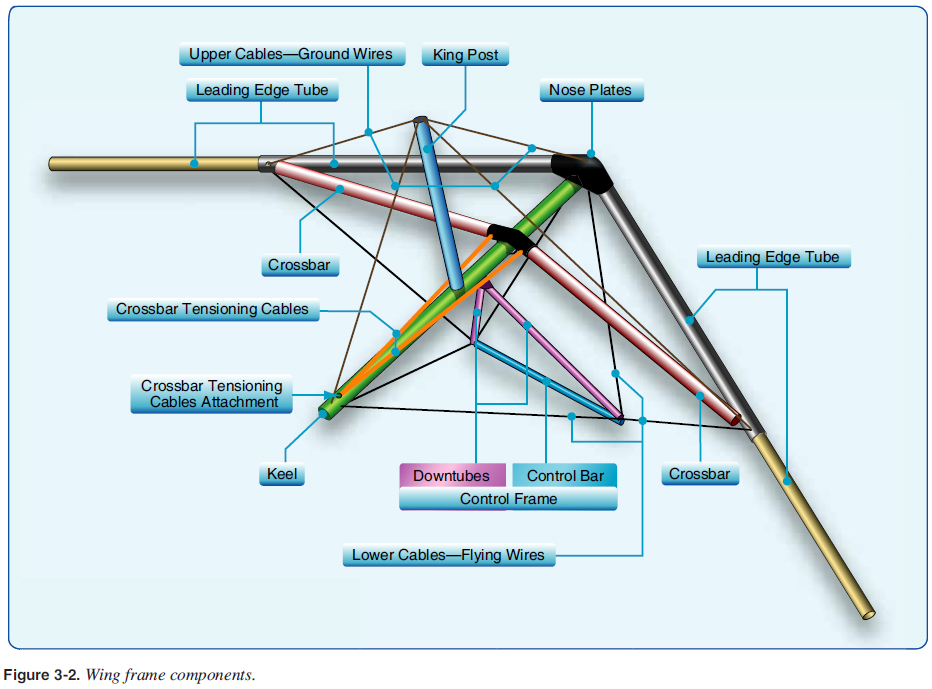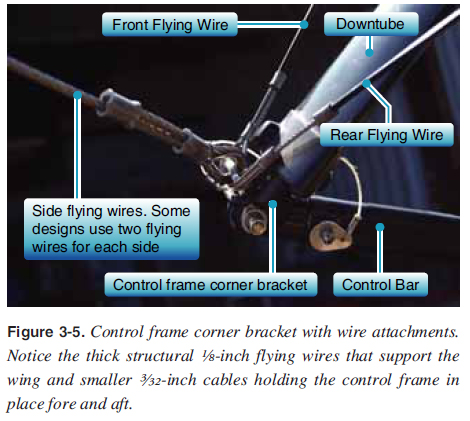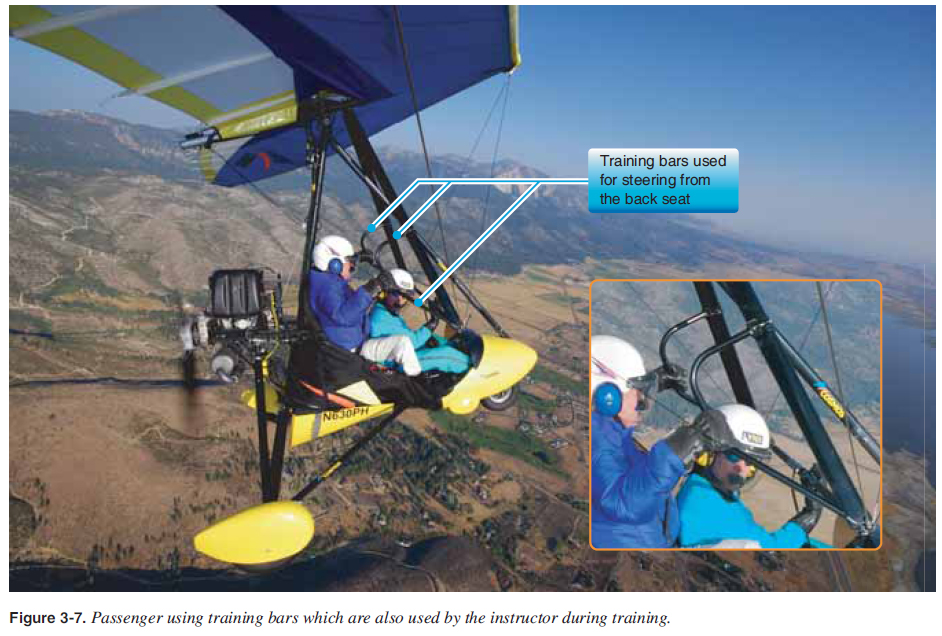
 |
|
||
| CHAPTER 3. Components and Systems
Crossbar The crossbar is two aluminum tube sections hinged above the keel that attach to the leading edges. The crossbar is tensioned back with the crossbar tensioning cables, which pushes the leading edges forward to conform to the sail. These crossbar tensioning cables are attached at the rear of the keel when the wing is tensioned into fl ying position. [Figure 3-4]  These crossbar sections are under a compression load and designed to be stiff with no bending. A larger diameter tube is typically used to avoid any bending when the wing is fl ying. A ding, dent, or bend in the crossbar could spell disaster during fl ight because it is one of the main structural members that holds leading edges into position during fl ight. For wing take down and packing, the crossbar haul back cables are released, the crossbar hinged center moves forward, and the leading edges rotate in toward the keel about the nose plates and come together, allowing the wing to fold down into a long tube for transport and/or storage. Control Frame The triangle-shaped control frame serves two main purposes. It provides the lower structure for the wing and is the control bar for the pilot. The control frame is bolted to the keel with two downtubes extending from the keel attachment to the horizontal base tube, which is the pilotís control bar. [Figures 3-2, 3-5, and 3-6]    Control frame corner brackets at the bottom of the downtubes provide the wing structural attachments for the fl ying cables or struts that attach to each leading edge/crossbar junction, and secure the control bar fore and aft to the wing with the front and back wires attached to nose plates and the aft section of the keel. [Figures 3-5 and 3-6] During fl ight, the downtubes are similar in compression to the crossbar and must be stiff and straight to maintain structural integrity. The base tube/control bar is under tension during fl ight. Front and rear fl ying wires hold the control frame in place fore and aft. Side fl ying wires hold the control frame in place side to side and provide structure to hold the wings in place while fl ying. [Figures 3-2, 3-5, and 3-6] Strutted wings use struts in place of the side fl ying wires, which is discussed later in this chapter. Training bars are added for dual controls so the person in back can fl y the aircraft. These are typically used by an instructor for training but can be used by a passenger in the back also. [Figure 3-7]  |
| ©AvStop Online Magazine Contact Us Return To Books |